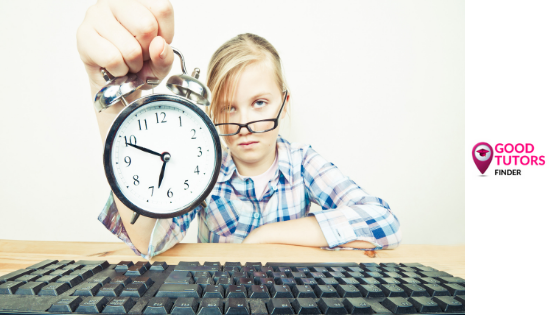Balancing Healthy Screen Time and Distance Learning
For many students today, distance learning has become the new normal. Their classes happen on virtual-meeting platforms, such as Zoom or Google Classroom. All you have to do is get in Zoom, and when that Zoom’s over, get into the next Zoom. Distance learning means lots of screen time.
Kids are also stuck at home during their free time. YouTube, TikTok, Instagram, Netflix, TV and video games offer easy ways to pass time.
Screen time guidelines exist for a good reason. Research has shown that kids who spend a lot of time on screens are more likely to have eye problems, weight problems and trouble with reading and language. They also are more likely to show a wide range of other physical and mental health issues. Yet right now, screens are the only safe way for many young people to learn or socialize. How should kids balance healthy screen time and distance learning?
Get up and go outside
The biggest problem with balancing healthy screen time and distance learning is that with screens people usually sit still while they watch or interact with them. If students are spending all day sitting on screens, when are they moving? Extended time sitting and not moving around leads to changes in the body’s metabolism. These changes make obesity, diabetes, heart disease and other health issues more likely. It’s something doctors refer to as metabolic syndrome. So an important question to ask yourself is not how much screen time are you getting, but how active are you?
During the pandemic, getting enough physical activity may be even more difficult than usual. People who are working or learning from home no longer move around a large school or office building. Also, many sports and other group activities that bring people into close contact aren’t safe.
Getting in at least one daily workout is great, but you should still get up and move around regularly throughout the day — even if it’s just to get a drink of water or play with a pet.
Going outside is good for more than just your metabolism. Your eyes will thank you, too. Problems with myopia (when distant objects look blurry) have been linked to screen time.
When you only look at things close-up, your eyes don’t get practice focusing on distant objects. Eye experts recommend looking away from a screen every 20 minutes to something at least 6 meters (20 feet) away. If you can’t get outside that often, looking out a window regularly should help. Brighter light levels outdoors may play a role, too.
[Related article: Best Time Management Tips for Online Learning]
All screen time is not equal
For healthy screen time and distance learning, also ask yourself what you are doing on your computers, smartphones or other screens. A teen who FaceTimes with her grandparents or does homework online for an hour is having a very different experience than someone who sits alone and watches an action movie or plays Fortnite for that hour.
Educational screen time was linked to doing better in school and had no bad health effects. More passive screen time was linked to worse outcomes in health and school achievement, the researchers found, compared with the other categories. But the impact was “quite small,” Problems showed up mainly in kids spending more than eight hours a day on screens.
It is highly recommended to make sure that screen time does not substitute for any sleep or active time. The group also encourages kids to spend screen time with others, not alone. And certain times of the day, such as meals and bedtime, should be media-free. The guidelines also ask parents to put away their own screens while spending time with their kids.
[Related article: Amazing Tips for Online Students]
‘No student should be left offline’
It’s one thing to worry about healthy screen time and distance learning if you have your own computer or phone. But for many students, the real worry is how they are going to participate in virtual classes.
When the pandemic hit, students, teachers and parents had very little time to prepare for distance learning. But over time, everyone has adjusted.
In some ways, distance learning has been a good change. Students may not always be able to experiment with different ways of learning. At home, many kids have more freedom to lie on the floor, pace around, move to another room or take breaks as needed. Also, teachers and students and families have had more one-on-one conversations as they struggle to figure out the new normal.
You might also be interested to take a look at our recent blogs for more learning tips and guides.
If you like to provide your child with a trained tutor after school or during the holidays to help with structure and organization, we have just what you need. At Good Tutors Finder, we only have hand-picked tutors who are well versed in these and other strategies and can apply them, whether in IB Diploma, IGCSE, AP, or lower grades. Mathematics, Science, Physics, German, French, English, and more, no matter which subject is complex, our tutors can help.
Our tutors are available everywhere in Switzerland, including Zurich, Basel, Bern, Zug, Geneva, Lausanne, and all other cities.




